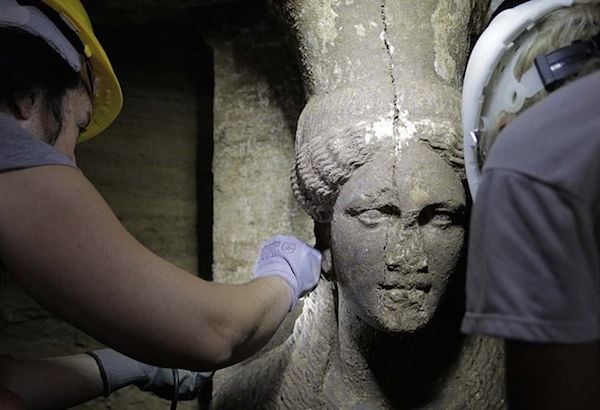Art World
Two Rare Statues Discovered in Greek Tomb
The stunning caryatids guard the entrance to the largest ancient tomb ever found in Greece.

The stunning caryatids guard the entrance to the largest ancient tomb ever found in Greece.

Lorena Muñoz-Alonso

Two splendid caryatid statues have been discovered at the entrance to the largest ancient tomb ever found in Greece, the AFP reports. Archaeologists have been digging at the site since mid-August. Greek Prime Minister Antonis Samaras called the site a “very important find.”
The two female figures, sporting long-sleeved tunics and curly hair falling onto their shoulders, were found last Saturday standing guard at the opening of the mysterious Alexander the Great–era tomb near Amphipolis in northern Greece. “The left arm of one and the right arm of the other are raised in a symbolic gesture to refuse entry to the tomb,” the culture ministry said in a statement. The excitement is growing among archaeologists as they look to confirm that the tomb is untouched, with all its treasures intact.
This is not the first breakthrough unearthed in this Macedonian area. Previous evacuations of local tombs have uncovered troves of gold jewelry and sculptures. A five-meter-tall marble lion, which currently stands on a nearby roadside, originally topped the 500-meter-long burial mound. The mound is ringed by a marble wall. Two other headless stone Sphinx statues were found flanking the tomb’s outer entrance.
“The second entrance with the caryatids gives us an important clue that it is a monument of particular importance,” the ministry noted. The tumulus tomb has fueled numerous theories about who might have been buried in it, ranging from Alexander’s Bactrian wife Roxane to his mother Olympias or one of his generals. Experts say the chances of Alexander himself being buried there, however, are small.